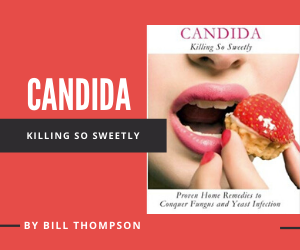7 User Reviews
★★★★★
A connection? Seems logical.
The LS symptoms are under control with diet (no dairy, wheat, sugar, flour) and drinking lots of pure water, plus doses of lactobacillus and digestive enzymes, all of which were originally prescribed for IBS, so they keep my gut (and therefore my whole system) healthy and alkaline.
(Norwalk, Ct)
07/30/2015
I have had Ls for 2.5 years. I found Christine Kent from Whole Woman and she as suggested honey, the size of a pea, down there with red clover tea. There are also capsules, low oxalate diet, alkalinizing our system and a low anti-inflammatory diet. Do not have candida anymore.
Not giving up hope. Allegra
(Burlingame)
03/16/2016
★★★★★
I had the same issue and think that frequent candida is the precursor to Lichen Sclerosus.
(Québec)
05/23/2017
★★★★★
I think chronic candida has something to do with this LS. I have read on another forum that the Albican cadida not well treated would be the cause.. I am trying at the moment a certain essential oil cure to see if I can cure my LS from the inside instead of just treating symptoms....Brigitte... stay strong ladies.
Anti-Candida Diet
★☆☆☆☆
I see where some say that a candida diet or taking Essia Tea will be of help, but I don't believe it for one minute. I have had no sugar for 6 months with very little bread and have been on a strict anti candida diet for 3 months (no nothing) along with drinking that tea and I just got LS.
(Seattle, WA)
02/18/2015
★★★☆☆
I have been on a paleo diet for over 5 years and my Lichen Sclerosus started about 1 1/2 years ago! Not sure if diet is a preventive, but I think mine would be worse if I didn't eat healthy.
(Whaletown)
06/13/2017
Second year of menopause, two months ago started on estrogen cream and just got Diagnosed with LS! Time to self examine. Quit smoking, start probiotics, cut out sugar, and get rest. The topical application of diluted Apple cider, followed with a baking soda mixed into coconut oil is wonderful.
Anti-Candida Diet
★★★★★
Recently I have had a flare up of intense itching in the crease areas of the groin, also due to stress and can easily remove skin if I scratch even firmly. I will get it checked but am looking at the original solution to deal with it. I'm also looking at Red clover tea and will report what happens.
(Maui, HI)
11/26/2020
Tulip Treatment at Coyle Institute, Pensacola, Florida.
(Windsor)
03/09/2021
(HI)
04/10/2022
I am 71 years old. Had treatment 2020. It's not a cure. Because I am old, I will go back for a touch up treatment November 4 ,2022. There is no cure, only treatments to live a semi-normal life. It has helped me tremendously.
(Indiana)
09/11/2022
Is the TULIP treatment like the MonaLisa Touch procedure? I have had the 3 treatments and still have the white skin but not the bouts of wicked itching. It is manageable now to wear clothes. I also soak in baking soda and epsom salts with lavender oil added to the bath. I am curious if the TULIP treatment would help.
Anti-Candida Diet
★★★★★
(Effingham, Usa)
07/22/2011
I have LS , never did have a yeast infection or bladder infection. Mine started after I had my hysterectomy. Then dx with hypothyroid. I have found a relief in my own concoction - through many trials... and think I might have gotten rid of it.
(Livonia, Mi)
06/07/2017
(Minnesota, US)
12/02/2014



